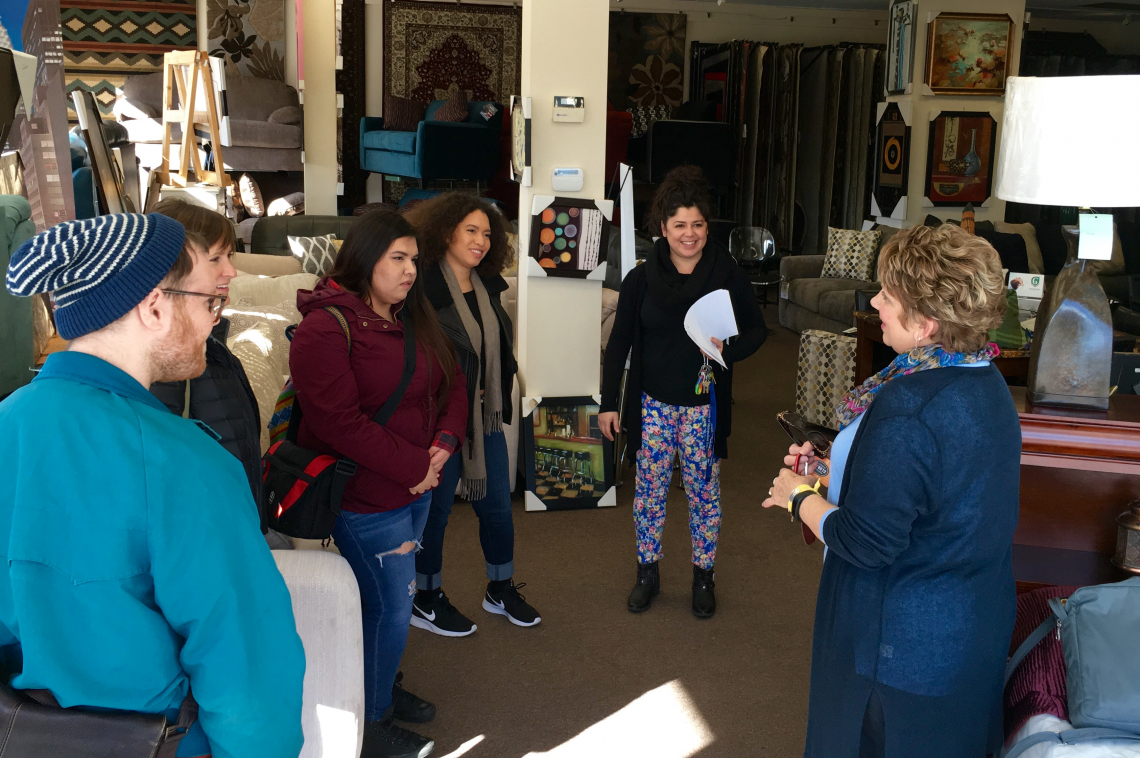
Recently, three of our team members (Leila Tamari, Program Officer; F. Javier Torres, Director of National Grantmaking; and Adam Erickson, Director of Communications) traveled to the Midwest to check out the work of three ArtPlace funded projects in-person. These site visits give us the chance to contextualize the work our partners do by letting us see them in action within their own communities. Our first stop was a visit with Lake Street Arts! in Minneapolis, Minnesota.
Lake Street Arts! is a multidisciplinary community and leadership development vehicle led by Pangea World Theater, a theater company with a specific focus on bringing communities together across cultural and ethnic divides. Their goal is to use the power of creativity to battle involuntary displacement in the 5-mile business corridor they call home.
One of Pangea’s strengths–as Leila pointed out after our visit–is in their ability to cull together different ideas and people from all over the area and provide an outlet for marginalized artists to develop their work. During the visit, we toured Pangea’s black box theater, which they regularly offer up to local creatives. Their artistic director, Dipankar Mukherjee, mentioned to us that there’s a group of playwrights in the city who were tired of only having their plays read and never performed. Now, Pangea is their space for the next phase of theater development after their play is written by allowing them to use the black box to begin to stage lighting and sets.
Pangea’s strengths extend further than those of a traditional theater company, though. Their partnerships with local businesses and spaces have positioned them as a community leader for economic development and anti-displacement strategies.
As we toured the Lake Street district, we were surprised by the variety of businesses there–everything from auto shops to varied ethnic-specific grocery stores to food trucks to furniture stores. It’s an incredibly vibrant area, but it’s also one in the midst of some potentially precarious development.
“There’s a lot of commercial market rate and above market rate housing that’s being developed in and around the corridor,” Javier pointed out as we reflected on the visit. “Pangea knows that when that happens, it increases the risk of residents (and businesses) being displaced.”
Unfortunately, it’s difficult to analyze the situation because there’s no information on which businesses own their commercial spaces or have long-term leases. However, the key to ensuring stability may already be in Pangea’s arsenal of assets.
One of the big surprises to us during the visit was in learning about Pangea’s diverse range of community partners, including the local sheriff’s office, a furniture store and several restaurants. If they’re able to work together with these partners to increase foot traffic to the district and be active within the city to influence policy and the pace, quality, and aesthetics of development in the Lake Street district, we believe they could have some serious influence over the character of this corridor in the long-term. Javier pointed out that Pangea is also in a great position to lead the charge on an inventory of the corridor to see who owns their spaces, who rents, how long rents are and what their average price is, so that they and their partners can track change in those metrics over time and develop tools to help businesses keep their spaces.
Of course, it may not always be clear how to best do this work, but as Javier says, “Sometimes things are messy and it’s okay to step in without having all the answers.” We believe that there are many opportunities for them to tell their stories and evolve their practice to foster and engage community within the changing landscape. Pangea is stepping in with respect and intention. And that’s half the battle.





